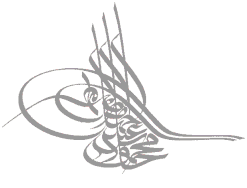Art predates history; sculptures, cave paintings, rock paintings, and petroglyphs from the Upper Paleolithic starting roughly 40,000 years ago have been found, but the precise meaning of such art is often disputed because so little is known about the cultures that produced them. The oldest art objects in the world: a series of tiny, drilled snail shells about 75,000yrs old, [24] were discovered in a South African cave, see Art of South Africa.
The great traditions in art have a foundation in the art of one of the great ancient civilizations: Ancient Egypt, Mesopotamia, Persia, India, China, Greece, Rome or Arabia (ancient Yemen and Oman). Each of these centers of early civilization developed a unique and characteristic style in their art. Because of the size and duration these civilizations, more of their art works have survived and more of their influence has been transmitted to other cultures and later times. They have also provided the first records of how artists worked. For example, this period of Greek art saw a veneration of the human physical form and the development of equivalent skills to show musculature, poise, beauty and anatomically correct proportions
In Byzantine and Gothic art of the Western Middle Ages, art focused on the expression of Biblical and not material truths, and emphasized methods which would show the higher unseen glory of a heavenly world, such as the use of gold in paintings, or glass in mosaics or windows, which also presented figures in idealized, patterned (i.e. "flat") forms.

The western Renaissance saw a return to valuation of the material world, and the place of humans in it, and this paradigm shift is reflected in art forms, which show the corporeality of the human body, and the three dimensional reality of landscape.
In the east, Islamic art's rejection of iconography led to emphasis on geometric patterns, Islamic calligraphy, and architecture. Further east, religion dominated artistic styles and forms too. India and Tibet saw emphasis on painted sculptures and dance with religious painting borrowing many conventions from sculpture and tending to bright contrasting colors with emphasis on outlines. China saw many art forms flourish, jade carving, bronzework, pottery (including the stunning terracotta army of Emperor Qin), poetry, calligraphy, music, painting, drama, fiction, etc. Chinese styles vary greatly from era to era and are traditionally named after the ruling dynasty. So, for example, Tang Dynasty paintings are monochromatic and sparse, emphasizing idealized landscapes, but Ming Dynasty paintings are busy, colorful, and focus on telling stories via setting and composition. Japan names its styles after imperial dynasties too, and also saw much interplay between the styles of calligraphy and painting. Woodblock printing became important in Japan after the 17th century.
The western Age of Enlightenment in the 18th century saw artistic depictions of physical and rational certainties of the clockwork universe, as well as politically revolutionary visions of a post-monarchist world, such as Blake’s portrayal of Newton as a divine geometer, or David’s propagandistic paintings. This led to Romantic rejections of this in favor of pictures of the emotional side and individuality of humans, exemplified in the novels of Goethe. The late 19th century then saw a host of artistic movements, such as academic art, symbolism, impressionism and fauvism among others.
By the 20th century these pictures were falling apart, shattered not only by new discoveries of relativity by Einstein [25] and of unseen psychology by Freud,[26] but also by unprecedented technological development accelerated by the implosion of civilisation in two world wars. The history of twentieth century art is a narrative of endless possibilities and the search for new standards, each being torn down in succession by the next. Thus the parameters of Impressionism, Expressionism, Fauvism, Cubism, Dadaism, Surrealism, etc cannot be maintained very much beyond the time of their invention. Increasing global interaction during this time saw an equivalent influence of other cultures into Western art, such as Pablo Picasso being influenced by African sculpture. Japanese woodblock prints (which had themselves been influenced by Western Renaissance draftsmanship) had an immense influence on Impressionism and subsequent development. Then African sculptures were taken up by Picasso and to some extent by Matisse. Similarly, the west has had huge impacts on Eastern art in 19th and 20th century, with originally western ideas like Communism and Post-Modernism exerting powerful influence on artistic styles.
Modernism, the idealistic search for truth, gave way in the latter half of the 20th century to a realization of its unattainability. Relativity was accepted as an unavoidable truth, which led to the period of contemporary art and postmodern criticism, where cultures of the world and of history are seen as changing forms, which can be appreciated and drawn from only with irony. Furthermore the separation of cultures is increasingly blurred and some argue it is now more appropriate to think in terms of a global culture, rather than regional cultures.



No comments:
Post a Comment